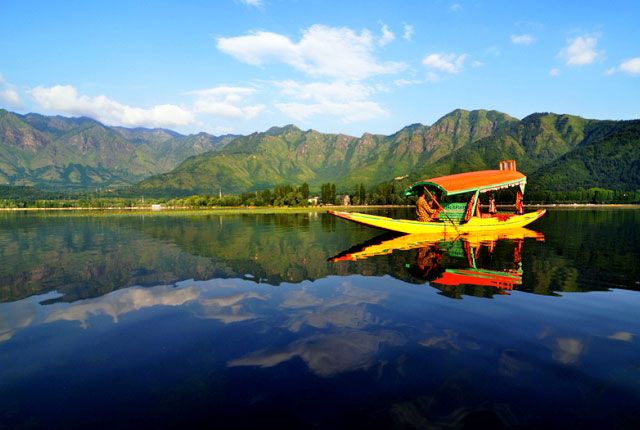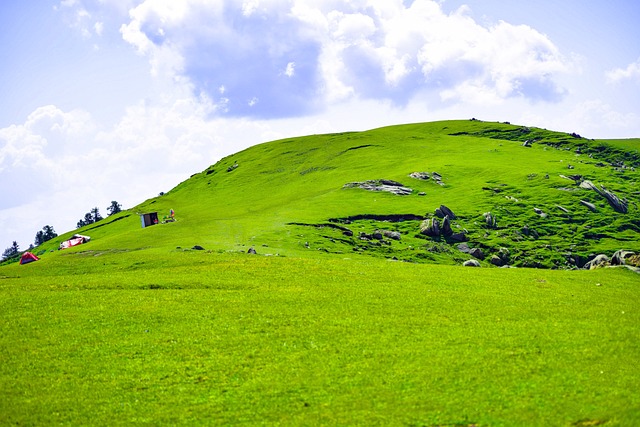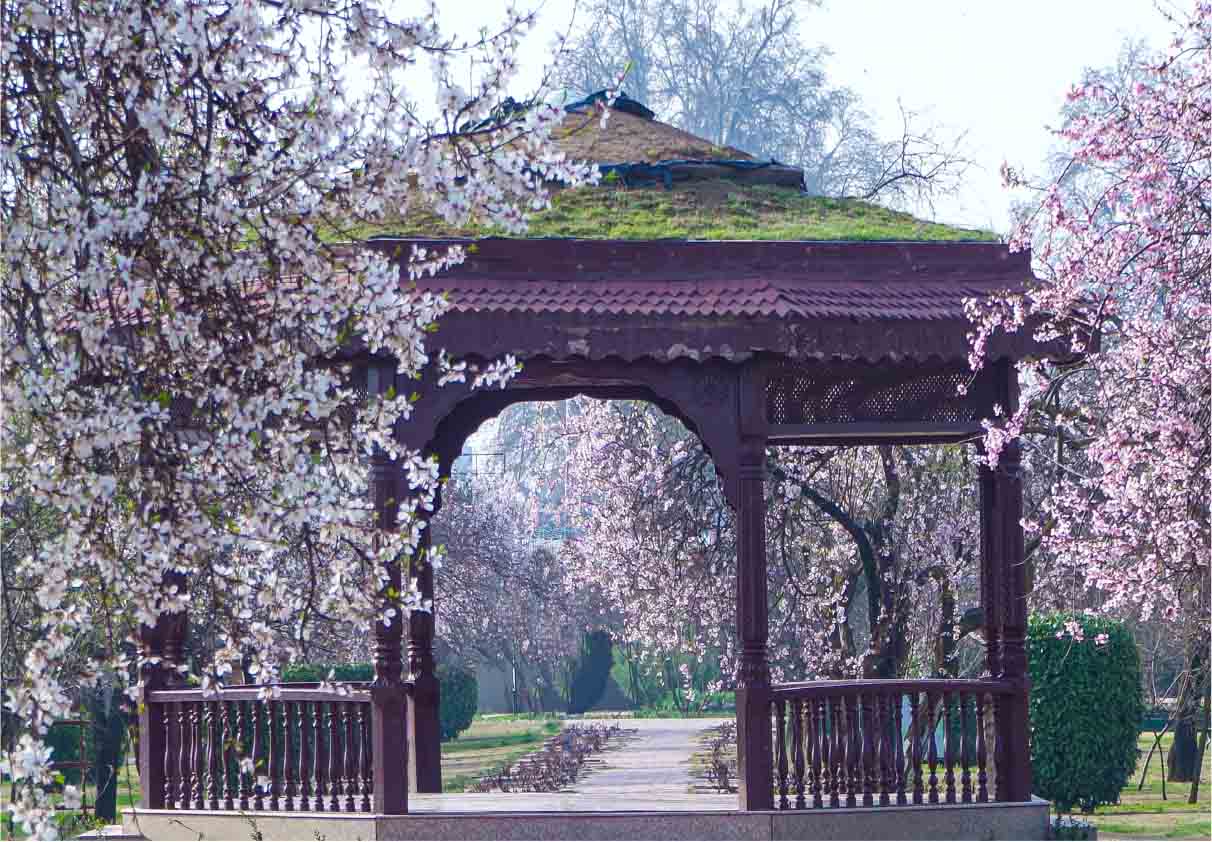
Badamwari Mughal Garden : A Kaleidoscope of Beauty
Table of Contents
ToggleOverview
The historic gem of the Persian garden design coupled with the grandeur of the Kashmir Valley, Badamwari Mughal Garden in Srinagar, Jammu and Kashmir. This is one of many legacies from the Mughal Empire undertaken here with grand magnificence in landscaping as well as magical views. It may not be as popular as Shalimar Bagh or Nishat Bagh, but it certainly is one of those places that provides a better understanding of the cultural and architectural excellence of Mughal kings.
This blog delves into rich history, cultural significance, restoration efforts, visitor experience, and everything that makes Badamwari a must-visit site for anyone traveling to Srinagar. Let’s explore the layers of history, design, and natural beauty that make this garden an extraordinary piece of the Mughal legacy.

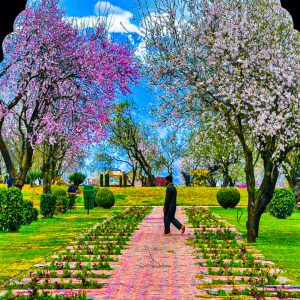
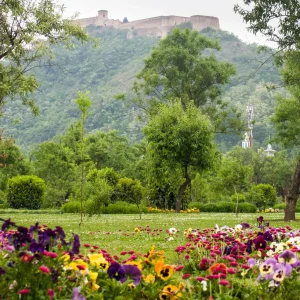
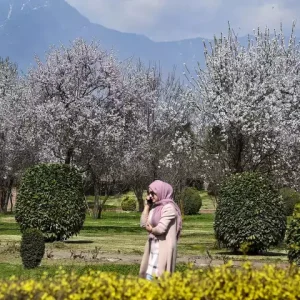

Historical Significance of Badamwari Mughal Garden
The place is called Badamwari, the “Almond Garden,” since it is so full of almond trees. Badamwari has a long history stretching back to the Mughal emperors, especially to Emperor Jahangir. The peak Mughal Empire had put forward an intricate mix of Persian, Central Asian, and indigenous Indian architecture and culture. Some areas in Kashmir – with their scenery and placid lakes – were the ideal hideaways for the Mughal royalty; it is in Kashmir that some of the famous gardens were erected by the Mughals.
As to the date of building Badamwari, nobody is aware. Nevertheless, one can feel that it was commissioned in the 17th century. The Mughal rulers well knew the therapeutic properties of the gardens and tried to build the paradise on earth through their gardening. In this respect, the peaceful surrounding called Badamwari would undoubtedly come among those paradises.
In time, it proved not to be a mere royal retreat but an integral part of Kashmir’s cultural texture. This beautiful garden, positioned on the north side of Shankaracharya Hill, would have provided an opportunity for the royal family to break away from oppressive summer heat and indulge in cool serenity that the valley held.
Designing the Garden: Mughal Inspiration Meets Kashmiri Taste
Generally, Mughal gardens reflect geometric symmetry with water features, and lavish landscapes. Badamwari garden is not at all an exception. The design for the garden basically follows the characteristic Mughal pattern of Charbagh. Here, the Persian-influenced layout that divides the four parts of a garden by two perpendicular channels of water symbolises the four rivers of paradise, as portrayed in ancient Persian texts.
Every part of the garden is well planned. There are smooth grasses, rows of neatly aligned trees, and water channels going harmoniously across the place. The channels are normally filled with running water; it works both as a cooler and a lifeline. They cool the garden while in very hot summer months, besides helping to enhance the serenity in the garden.
Besides water features, the design of the garden also includes raised terraces that provide elevated views of Srinagar and its surrounding landscapes. The terraces are beautifully landscaped with a combination of flowers, fruit trees, and medicinal plants, creating a pleasing color palette and aroma. The Mughal rulers believed that the garden was an extension of paradise, and this design reflects that philosophy perfectly.
The beauty of Badamwari lies not in its symmetry but in the way it gets absolutely assimilated into the natural background. The view of the majestic Himalayan range from a distance set against the skyline of Shankaracharya Hill creates a splendor that can hardly find a parallel in nature.
Flora of Badamwari: Nature's Bounty
The flora is one of the most beautiful features of Badamwari Mughal Garden. It boasts an assortment of trees and plants, most of which were cultivated with a specific aesthetic and utility purpose in mind. Almond trees are the highlight of the garden; these flowers bloom during early spring and infuse the entire place with a sort of mystical beauty.
Besides the almond trees, other fruit-bearing trees are apricots, cherries, peaches, and walnuts. The presence of fruit trees reflects the love of the Mughals for beauty and utility. Not only were these trees a source of aesthetic beauty but helped to provide fresh fruits to the royal family. With the diverse blossoms in different shades, the rich green foliage of the garden makes it an excellent place where visitors can enjoy either the view or serenity.
In the spring and summer, Badamwari springs into an array of colorful blossomings where these blooming flowers, against a bright green backdrop, bring forth such vibrancy in an otherwise rather dry environment. This makes the entire walk so tranquil, offering tourists an opportunity to appreciate the transition in this once-beautifully deserted wintering area of a blooming garden of full life in the spring season.
In addition to flowers and fruit-producing trees, Badamwari consists of numerous medicinal plants. These were part of the broader interest in botany and herbal medicine taken by the Mughals. Even though these plants had proved valuable during the Mughal era, they exist within the garden today as a legacy to the medicinal genius of the Mughal emperors.
Restoration Work: Revival of a Legacy of the Mughals
Like other Mughal gardens all over India, Badamwari has not been shielded from the ravages of time, negligence, and environmental degradation. Year after year, the garden would face encroachment, deforestation, and the deterioration of water channels. However, in recent times, steps have been taken to restore this garden back into its former glory.
Restoration projects have been initiated to restore the historical and aesthetic integrity of the garden through the concerted efforts of the State Government and local preservationists. Restoration projects include terraced lawn restoration, replanting of fruit trees, water channel rejuvenation, restoration of fountains, and pathways. The mission is not only to make the place aesthetically appealing once again but also to retain the historical and cultural glory of this landmark.
The restoration of Badamwari is challenging since it has to retain the age-old traditional techniques along with modern landscaping techniques. In most cases, the design has been retained, but modern technologies and environmental conservation knowledge have been integrated to regain its glory in an environment-friendly manner. With such restorations, attention has been drawn to the place, thus enabling more visitors who have now come to witness the slow but steady transformation of this historical site.
Best Time to Visit Badamwari Mughal Garden
Choosing the best time to visit Badamwari depends largely on the type of experience you’re seeking. The garden’s charm varies with the seasons, and each season brings its own beauty and appeal.
Spring (March to May)
Spring is undoubtedly the most popular season to visit Badamwari. This is when the almond trees bloom in all their glory, filling the garden with delicate fragrance and vibrant colors. The almond blossoms with their soft pink and white hue bring a sense of magic. So photographers, nature lovers, and those who enjoy the beauty of nature come here. The temperature during this season is very mild and pleasing, and this is an ideal time for a stroll in the garden without any stress.
Summer (June to August)
During summer months, the climate is hot, and with this temperature that hits high numbers, Badamwari can still provide an avenue of comfort with its coolness and calm environment as it is elevated and shaded. It has on the one hand luscious fruit trees that bloom into full colors with apricot, cherry, and peach fruit-bearing trees, hence Badamwari makes for a nice place to take rest on summer afternoons given its water features combined with the shadows provided by trees .
Autumn (September to November)
Badamwari is also beautiful in the autumn season. The changing tree leaves are golden in hue, which brings a warm feel to the garden. The fresh autumn breeze is beautiful, which adds beauty to the garden. So, visit this garden in this season, and it will be fantastic if you do not want it crowded and prefer peace. Views of far-off mountains and Srinagar city become all the more compelling during the year.
Winter (December to February)
Winter is a whole different experience at Badamwari. It is usually snowed over in the garden, which makes the atmosphere very silent and mystical. A view of the almond trees covered with snow and the silence of the garden can be a very extraordinary thing. Though it is cold, the winter landscape offers opportunities to those who love the silence of the season and beauty of landscapes covered with snow.
Visitor Experience: Exploring the Garden
A visit to Badamwari is a walk through a historical garden; it offers serenity and beauty as one of Kashmir’s most cherished locations. It sets a very idyllic atmosphere for relaxation and all avenues of exploration. One can take long strolls through the terraced lawns, give oneself a panoramic view from higher levels, or just sit and listen to the soothing sound of water flow.
This place is full of subject matters for photography lovers with its beautifully crafted landscape in the garden. Moreover, from this garden, Srinagar and Dal Lake present an excellent panoramic view. This makes it the best place for those who desire a quiet day under the calm and peacefulness of nature for picnic purposes as quiet picnic spots abound here.
One of the striking things about Badamwari is that it sits in a position much less crowded than the rest of the Mughal gardens in the region. So, this is quite the best destination for those people who are seeking an atmosphere of intimacy and thoughtfulness.
Other Tourist Attraction Places near Badamwari: Srinagar City
Although Badamwari should not be missed, there are many other historical and cultural attractions found at Srinagar that accompany the visit of the Mughal gardens.
- Dal Lake: Known for its houseboats and Shikara rides, Dal Lake is one of the most iconic tourist destinations in Srinagar.
- Shankaracharya Temple: Located on top of a hill, this temple offers panoramic views of Srinagar and Dal Lake.
- Nishat Bagh: One of the famous Mughal gardens situated at the eastern end of Dal Lake, Nishat Bagh is famous for its terraced lawns and beauty.
- Hazratbal Shrine: This shrine is important to Muslims both historically and religiously. This shrine is on the northern side of Dal Lake.
- Jama Masjid: A very old mosque with a wooden structure and serene environment.
Conclusion
Badamwari Mughal Garden, Srinagar is an excellent opportunity to go back in time and experience the magnificence of Mughal architecture, serenity of nature, and the richness of cultural heritage of Kashmir. Whether it is colorful spring months or the quiet winter days, Badamwari certainly has its magic. This work of restoration will keep the beauty in front of later generations too while walking in the garden that shows the brilliant history of the Mughal Empire.
If you go to Srinagar, make sure you put Badamwari on your tour list because the historical significance of this place along with the natural beauty and peaceful atmosphere gives it a kind of place an unforgettable for a tourist.
How to book Kashmir tour?
Contact a travel agency that specializes in Kashmir tours. You can reach out to the following for assistance:
- Phone:
- +91 7889 655596
- +91 7006 891267
- Email:
Inquire about tour packages, itineraries, and pricing, and confirm your booking for a memorable winter experience!
People Also Ask
What is Badamwari Mughal Garden?
Badamwari Mughal Garden is a historic Mughal-era garden located in Srinagar, Kashmir. Known for its beautiful almond trees, it is a perfect example of Mughal garden architecture, showcasing symmetrical layouts, water channels, and vibrant seasonal blooms.
Where is Badamwari Mughal Garden located?
Badamwari Mughal Garden is situated in the northern part of Srinagar, Kashmir, India. It lies near the foothills of the Zabarwan Range and is a popular spot for both tourists and locals due to its scenic beauty.
Who built Badamwari Mughal Garden?
Badamwari Mughal Garden was established during the Mughal rule in Kashmir, with its origins traced back to Emperor Jahangir’s reign in the early 17th century. It was developed as a royal retreat for the Mughal emperors.
What makes Badamwari Mughal Garden special?
Badamwari Mughal Garden is special due to its stunning almond orchards that bloom in early spring, giving the garden a unique charm. The garden’s layout, inspired by traditional Mughal designs, includes terraced gardens, fountains, and scenic pathways.
What is the best time to visit Badamwari Mughal Garden?
The best time to visit Badamwari Mughal Garden is in spring (March to May) when the almond trees are in full bloom, filling the garden with vibrant colors. Autumn (September to November) is also a beautiful time when the garden’s foliage turns golden.
What are the key attractions in Badamwari Mughal Garden?
The key attractions in Badamwari include the beautiful almond trees, terraced layouts, vibrant floral displays, traditional Mughal architecture, and water channels. The panoramic views of Srinagar from the garden are also a major highlight.
How do I reach Badamwari Mughal Garden?
Badamwari Mughal Garden is located about 3 to 4 kilometers from the city center of Srinagar. You can reach the garden by hiring a taxi, auto-rickshaw, or by walking if you are staying nearby. Local shuttles and private vehicles also serve the route.
Is there an entry fee for Badamwari Mughal Garden?
Yes, Badamwari Mughal Garden has a nominal entry fee for visitors. The fee is usually affordable, and it contributes to the upkeep of the garden. Make sure to confirm the entry fee details before visiting as they may change.
Can I visit Badamwari Mughal Garden year-round?
Yes, Badamwari Mughal Garden is open year-round. However, the best experience is during spring when the almond blossoms cover the garden in white and pink flowers, creating a picturesque landscape. Winter months may bring snow, adding to its beauty.
What architectural features are found in Badamwari Mughal Garden?
The garden features traditional Mughal architectural elements such as terraced lawns, water channels, flowing fountains, and a symmetrical layout. The use of geometric patterns and emphasis on harmony with nature is central to the garden’s design.
Is Badamwari Mughal Garden good for photography?
Absolutely! Badamwari Mughal Garden is an excellent spot for photography. The blooming almond trees, lush greenery, scenic pathways, and historical structures provide ample opportunities for capturing beautiful shots, especially in spring and autumn.
What flora can be found in Badamwari Mughal Garden?
Besides almond trees, the garden also features a variety of flowers, shrubs, and plants, including roses, lilies, tulips, and marigolds. The combination of these plants with the striking almond blossoms creates a colorful display throughout the year.
What wildlife can be seen at Badamwari Mughal Garden?
Badamwari Mughal Garden is home to various species of birds, such as sparrows, pigeons, and migratory birds during certain seasons. The lush surroundings also support small insects, making it a peaceful spot for nature lovers.
How long should I spend at Badamwari Mughal Garden?
Typically, visitors spend about 1 to 2 hours at Badamwari Mughal Garden. The time spent may vary depending on how much you want to explore, photograph, and enjoy the peaceful environment of the garden.
Is there a guided tour available for Badamwari Mughal Garden?
Yes, you can hire a local guide to take you through Badamwari Mughal Garden. A guide will provide insights into the history of the garden, its architectural elements, and the significance of its floral species and layout.
Is Badamwari Mughal Garden suitable for picnics?
Yes, Badamwari Mughal Garden is a great place for picnics. The serene environment, shade from trees, and lush green lawns make it a perfect spot for a relaxing family outing or a peaceful day out with friends.
What are the nearby attractions to Badamwari Mughal Garden?
Nearby attractions include:
- Dal Lake: Famous for its houseboats and shikara rides.
- Shankaracharya Temple: Located on a hilltop, offering panoramic views of Srinagar.
- Nishat Bagh: Another beautiful Mughal garden.
- Hazratbal Shrine: A significant religious site in Srinagar.
Can I take a boat ride to Badamwari Mughal Garden?
While there is no direct boat access to Badamwari Mughal Garden, you can take a shikara ride on Dal Lake to enjoy the scenic views of the garden from the water. This is a unique way to approach the area.
Are there any food options near Badamwari Mughal Garden?
Yes, there are many food options available in the vicinity of Badamwari Mughal Garden. You can find local eateries and restaurants serving traditional Kashmiri cuisine, such as Rogan Josh, Gustaba, and Kahwa.
Is Badamwari Mughal Garden wheelchair accessible?
Due to the terraced nature of the garden, Badamwari Mughal Garden may not be fully wheelchair accessible. However, visitors with limited mobility can explore the lower sections and enjoy the views and beauty of the garden.
What is the history of Badamwari Mughal Garden?
Badamwari Mughal Garden was established during the Mughal reign in Kashmir. Emperor Jahangir is believed to have ordered the planting of almond trees here. The garden was designed as a royal retreat, with a layout typical of Mughal gardens, emphasizing symmetry and harmony with nature.
Is Badamwari Mughal Garden safe for tourists?
Yes, Badamwari Mughal Garden is considered safe for tourists. The garden is well-maintained, and it attracts visitors year-round. However, like visiting any public space, it’s always wise to stay aware of your surroundings and follow local guidelines.
What is the entry fee for Badamwari Mughal Garden?
The entry fee to Badamwari Mughal Garden is quite reasonable. However, it is advisable to confirm the exact fee at the entrance, as fees may vary based on seasonal events or government policies.
Is there any cultural significance to Badamwari Mughal Garden?
Yes, Badamwari holds cultural significance as it represents the Mughal influence on Kashmir’s architecture and horticulture. It is a testament to the aesthetics of Mughal garden design, which emphasizes lush greenery, water features, and a balance between natural beauty and architectural splendor.
Can I buy souvenirs from Badamwari Mughal Garden?
While there are no specific souvenir shops inside Badamwari Mughal Garden, you can find local markets nearby where you can purchase Kashmiri handicrafts, shawls, dry fruits, and other items to remember your visit.



